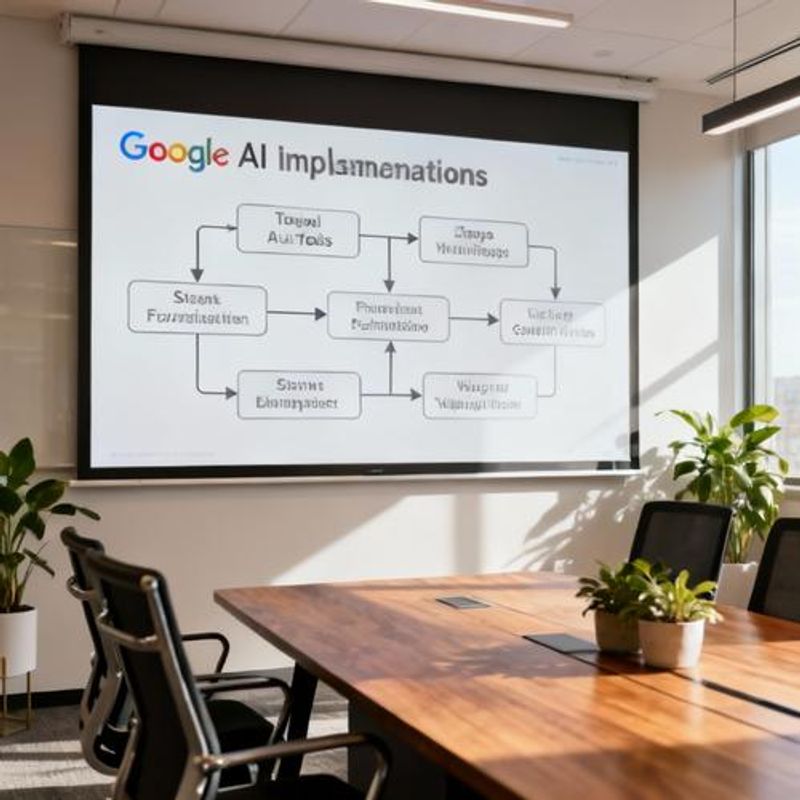Complete Guide to Google AI Tools for Data Analysts: 2024 Comprehensive Review

As a data analyst, you're constantly seeking tools that can accelerate your analysis workflow, improve accuracy, and unlock deeper insights from complex datasets. Google's AI-powered tools have revolutionized how analysts approach data science challenges, offering everything from advanced predictive modeling to automated data preparation. This comprehensive guide examines 12 essential Google AI tools that can transform your analytical capabilities, complete with practical implementation strategies and real-world use cases specific to data analysis workflows.

Why Google AI Tools Matter for Modern Data Analysis
Data analysts face mounting pressure to deliver insights faster while handling increasingly complex datasets. Traditional analysis methods often fall short when dealing with unstructured data, real-time processing requirements, or advanced machine learning tasks. Google AI tools address these challenges by providing pre-trained models, automated feature engineering, and scalable computing resources that would otherwise require extensive machine learning expertise and infrastructure investment.
Quick Reference: Top Google AI Tools for Data Analysts
Here are the essential Google AI tools every data analyst should know, categorized by primary use case:
- AutoML Tables - Automated machine learning for structured data prediction
- BigQuery ML - SQL-based machine learning within your data warehouse
- Vertex AI - Comprehensive MLOps platform for end-to-end model lifecycle
- Document AI - Extract insights from unstructured documents and forms
- Cloud Natural Language API - Sentiment analysis and entity extraction

Essential Google AI Tools for Data Analysis Workflows
1. BigQuery ML: Machine Learning in Your Data Warehouse
BigQuery ML revolutionizes how data analysts approach machine learning by enabling model creation directly within SQL queries. Instead of exporting data to separate ML platforms, you can build, train, and deploy models using familiar SQL syntax. This tool supports regression, classification, clustering, and time series forecasting models. The platform automatically handles feature preprocessing, hyperparameter tuning, and model evaluation, making advanced analytics accessible to SQL-proficient analysts without deep machine learning expertise.
2. AutoML Tables: No-Code Predictive Analytics
AutoML Tables empowers analysts to build custom machine learning models without writing code. Upload your structured dataset, specify the target variable, and the platform automatically performs feature engineering, model selection, and hyperparameter optimization. The tool provides model explainability features, showing which variables drive predictions and how they interact. This is particularly valuable for business analysts who need to justify model decisions to stakeholders while achieving production-ready accuracy.
3. Document AI: Structured Data from Unstructured Sources
Document AI transforms how analysts handle unstructured data sources like invoices, contracts, and reports. Pre-trained processors can extract specific information like dates, amounts, and entities from various document types. Custom processors can be trained for industry-specific documents. This tool significantly reduces manual data entry time and enables analysis of previously inaccessible data sources, expanding the scope of insights available to data teams.
4. Vertex AI: Enterprise-Grade MLOps Platform
Vertex AI provides a unified platform for the complete machine learning lifecycle, from data preparation to model deployment and monitoring. For data analysts working in enterprise environments, Vertex AI offers managed notebooks, automated model versioning, and integrated data labeling services. The platform supports both AutoML and custom model development, allowing teams to scale their analytical capabilities as requirements evolve.
Implementation Framework and Best Practices
Successfully implementing Google AI tools requires a structured approach. Start by identifying your most time-consuming analytical tasks and data quality challenges. Begin with BigQuery ML if you primarily work with structured data and are comfortable with SQL. For teams handling mixed data types, Document AI can immediately add value by digitizing manual processes. Establish data governance practices early, as AI tools amplify both good and bad data practices. Create a pilot project with clear success metrics before scaling organization-wide deployment.
Step 1: Assessment - Audit current analytical workflows and identify automation opportunities. Step 2: Pilot Selection - Choose one high-impact, low-risk use case for initial implementation. Step 3: Data Preparation - Ensure data quality and establish proper access controls. Step 4: Tool Configuration - Set up chosen Google AI tools with appropriate permissions and integrations. Step 5: Testing and Validation - Compare AI-generated insights with existing methods to verify accuracy. Step 6: Team Training - Provide hands-on training for analysts who will use the tools daily. Step 7: Scaling and Optimization - Gradually expand usage and optimize based on real-world performance.

Common Pitfalls and How to Avoid Them
Data analysts often encounter several challenges when adopting Google AI tools. Over-reliance on automated feature selection can miss domain-specific insights that manual feature engineering would capture. Always validate AI-generated features against your business knowledge. Cost management becomes critical with cloud-based AI tools - establish usage monitoring and budget alerts early. Model interpretability can be challenging with complex AutoML models, so maintain parallel simpler models for stakeholder communication. Data privacy and compliance require careful attention, especially when using cloud-based processing for sensitive information.
Mistake 1: Assuming AI tools eliminate the need for data validation and quality checks. Reality: AI amplifies data quality issues, making validation more critical than ever. Mistake 2: Jumping to complex models without establishing baseline performance with simpler approaches. Reality: Start with basic models to understand your data before leveraging advanced AI capabilities. Mistake 3: Neglecting to establish proper data governance and access controls before tool deployment. Reality: AI tools require stricter governance due to their ability to process and expose sensitive patterns in data.
Next Steps for Your AI-Enhanced Analytics Journey
Google AI tools offer data analysts unprecedented opportunities to enhance their analytical capabilities and deliver deeper insights faster. Start your implementation journey by selecting one tool that addresses your most pressing analytical challenge. BigQuery ML is ideal if you work primarily with structured data, while Document AI provides immediate value for teams dealing with unstructured information sources. Remember that successful AI adoption requires combining technological capabilities with domain expertise and proper governance practices. Begin with a small pilot project, measure results rigorously, and scale gradually based on demonstrated value. The future of data analysis lies in augmenting human insight with AI capabilities - these Google tools provide the foundation for that transformation.